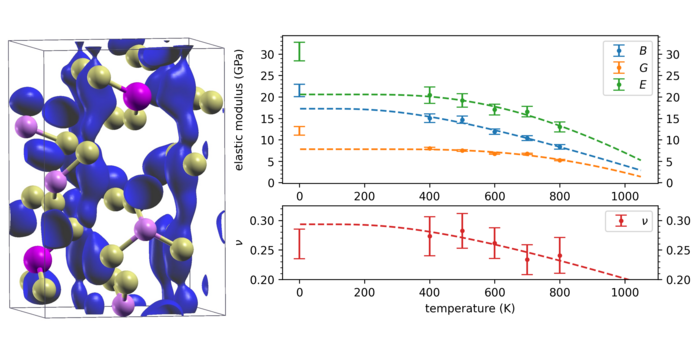Lithium ions are very mobile at ambient temperatures in solid-state ionic conductors, and that means atoms do not simply vibrate around their equilibrium positions. Disorder is bad in production systems.
A new paper applied a fully dynamical approach to recover the elastic tensors and elastic moduli of superionic materials, based on the Parrinello-Rahman method of calculating the average covariance of the strain during extensive first-principles molecular dynamics simulations. The team was able to obtain reference results for the elastic constants and moduli of three benchmark oxide and sulfide solid-state electrolytes. The results show that static methods overestimate the elastic response by a significant amount, between 25 percent and 50 percent.

(A) Isosurface of Li-ion probability density for LGPS, showing the superionic character of these materials. b) Elastic moduli for LGPS at different temperatures, calculated with dynamical sampling (T > 400 K) and with static stress-strain relations in different stable configurations (T = 0 K), showing the overestimation of the elastic response of these materials by the latter approach. Credit: Giuliana Materzanini
“People in the solid-state-ionics community didn't see an issue in calculating the elastic constants of such materials with static methods—this was kind of an established protocol,” says Giuliana Materzanini of Université Catholique de Louvain. “We came up and said, ‘Are we sure we are doing the right thing?" and now we know the answer: not really, at least for the materials studied here.“
The authors note it may be due to the quasi-liquid nature of the superionic materials. It makes them compliant, a feature that can only be captured by taking into account the continuous migration of the mobile ions, even at room temperature, which in other cases can mean the overestimation seen with static methods with respect to the proper dynamical treatment.
For next-generation progress it will be important to address the elastic properties of superionic conductors with dynamical sampling. The work also provides computational reference results, which had not previously been available to the community, the researchers said.





Comments